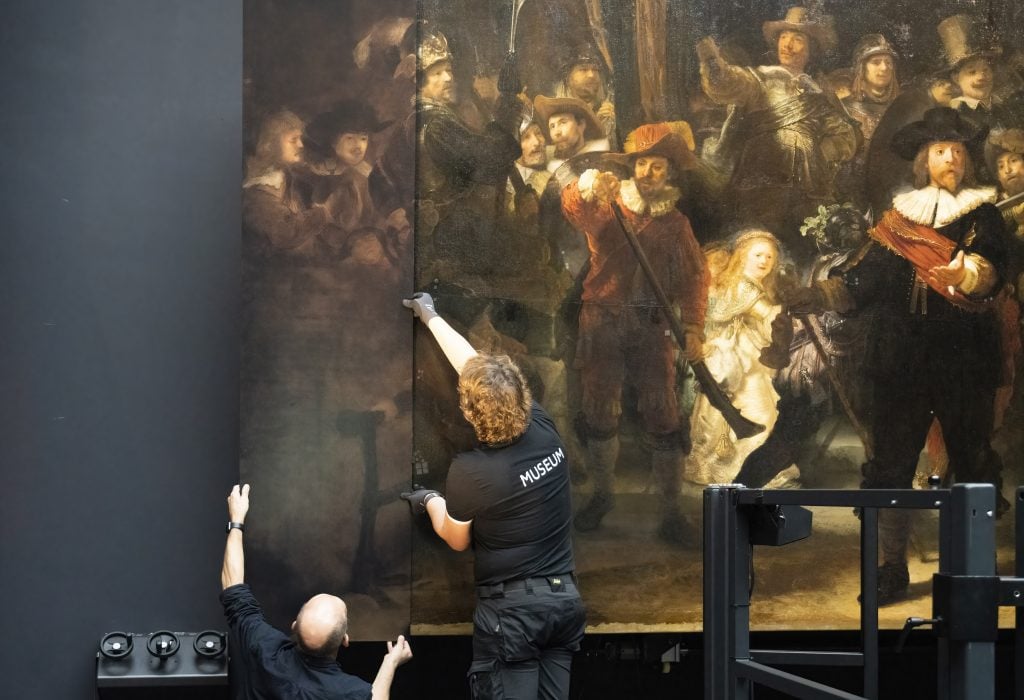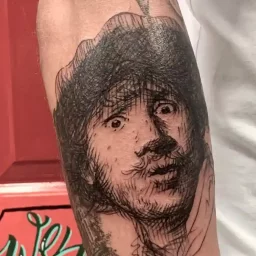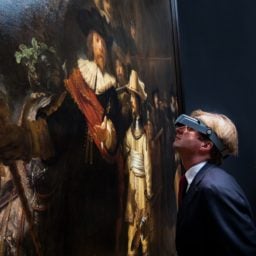Hanging in the Rijksmuseum in Amsterdam, Rembrandt van Rijn’s colossal canvas, Militia Company of District II under the Command of Captain Frans Banninck Cocq—better known as The Night Watch—measures about 12 by 14 feet and is the paragon of Dutch Golden Age painting.
And though it is one of the most visited paintings in the world, it hasn’t been seen in its full glory for 300 years—until now.
In 1715, the work was to be transported for display to Amsterdam’s Town Hall, and was cropped on all four sides to fit between the building’s narrow columns, removing two characters on the left side, and architectural features in the composition.
All told, the painting was trimmed two feet from the left side, nine inches from the top, 12 cm from the bottom, and seven cm from the right. Those fragments have never been found.
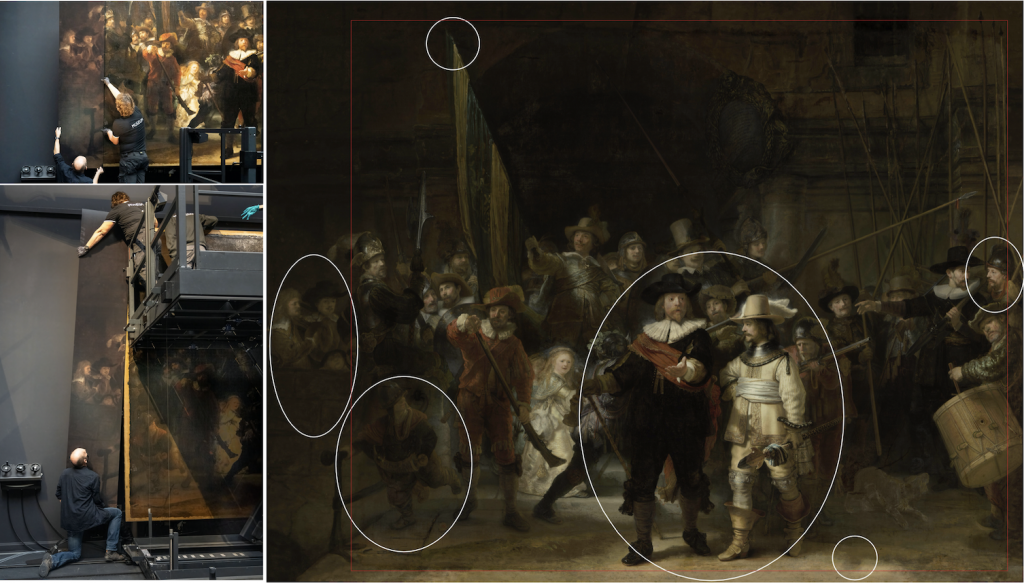
Rembrandt’s The Night Watch with key differences circled. Courtesy of the Rijksmuseum.
With the power of A.I., experts have now reconstructed the missing sections of the work, which included three figures on a bridge (two militiamen and a boy) on the painting’s left side, and an empty space on the bottom, which enhances the dynamism Rembrandt intended.
The reconstruction also shows that the artist meant for the central figures, Banninck Cocq and Lieutenant Willem van Ruytenburch, to be positioned right of center—not in the middle—which also contributes to the sense of movement.
“Thanks to this reconstruction, we can now see that the composition as it was painted by Rembrandt was even more dynamic,” Rijksmuseum director Taco Dibbits said in a statement. “It is wonderful to be able to now see with our own eyes The Night Watch as Rembrandt intended it to be seen.”
The museum’s Operation Night Watch team, as it was dubbed, was able to recreate the missing parts of the work using high-resolution images of the current composition and artificial neural networks that learned Rembrandt’s techniques and mannerisms to mimic his style. Another key source material was a copy of the work painted by Gerrit Lundens between 1642 and 1655, before it was cut.
“Each generation has used the tools available to it to attempt to reconstruct the painting,” said Pieter Roelofs, head of paintings and sculptures at the museum. “Now we are doing the same, using the most advanced techniques currently available.”
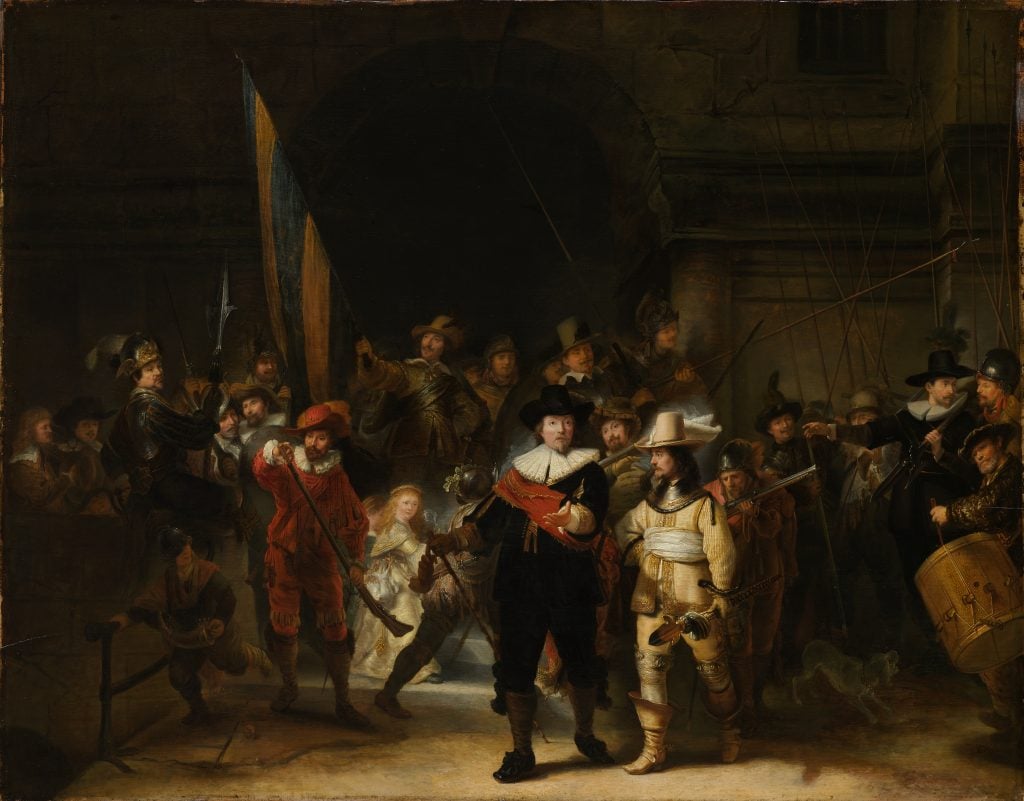
Gerritt Lundens’s copy of The Night Watch was used as a point of reference for the original composition.
The reconstructed images were printed on panels and are now on display, framing the painting to complete the full effect of the intended composition.
The reconstruction effort is the latest phase in an extensive research project that began in 2019 with the painstaking conservation of the work undertaken by 12 experts in a glass chamber, working live in front of the public. The conservation work will resume after a three-month viewing period.
See images of the reconstruction process below.
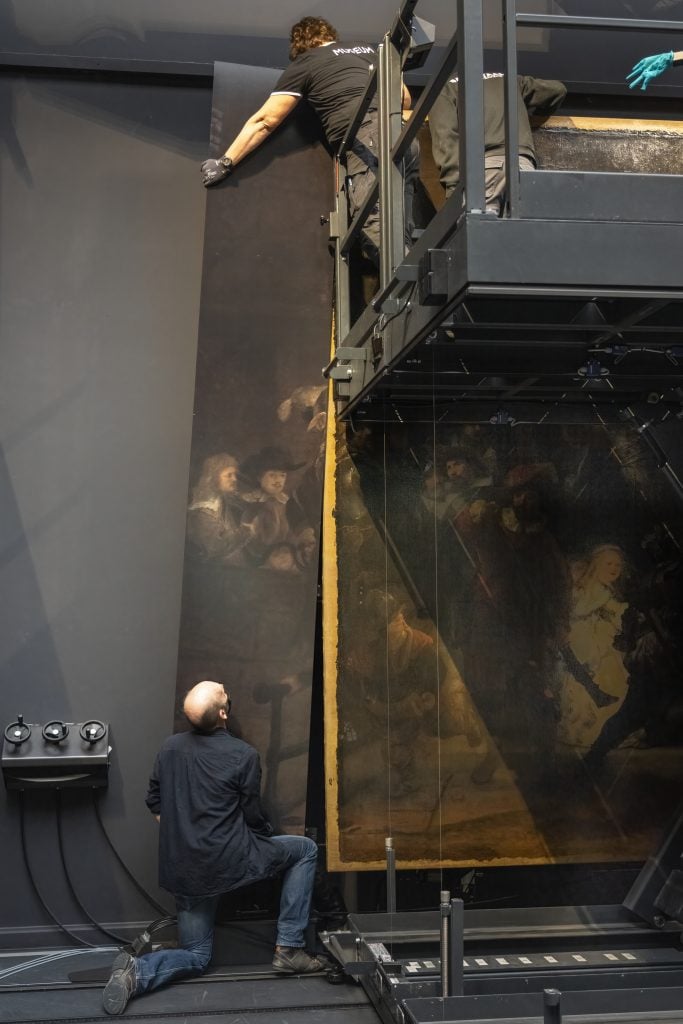
The process of reconstruction. Photo: Rijksmuseum/Reinier Gerritsen.
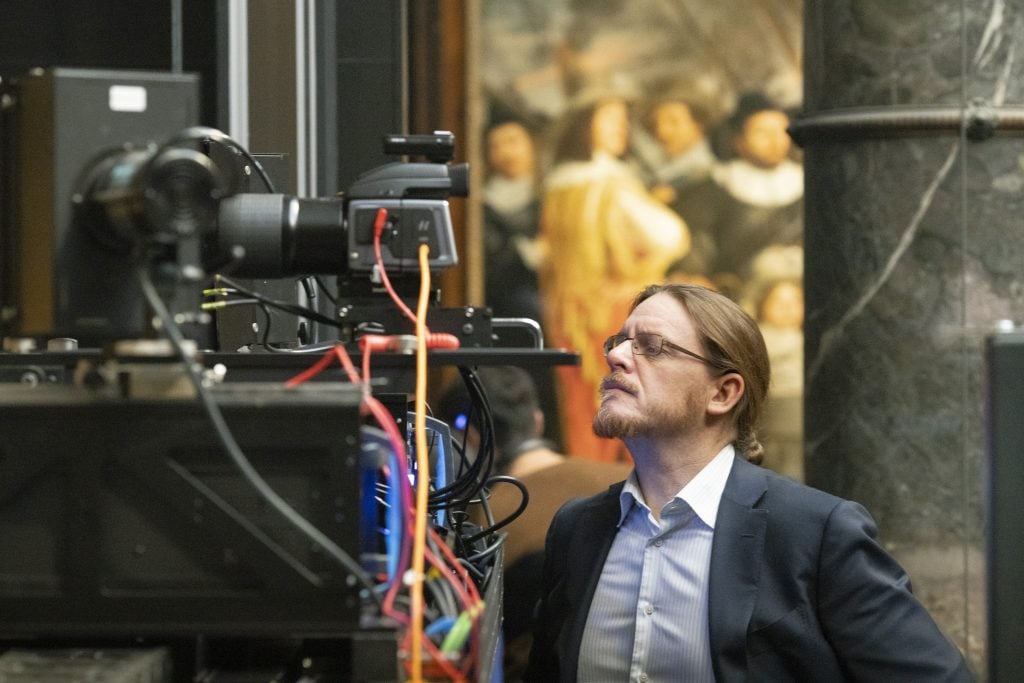
Robert Erdmann. Photo: Rijksmuseum/Reinier Gerritsen.
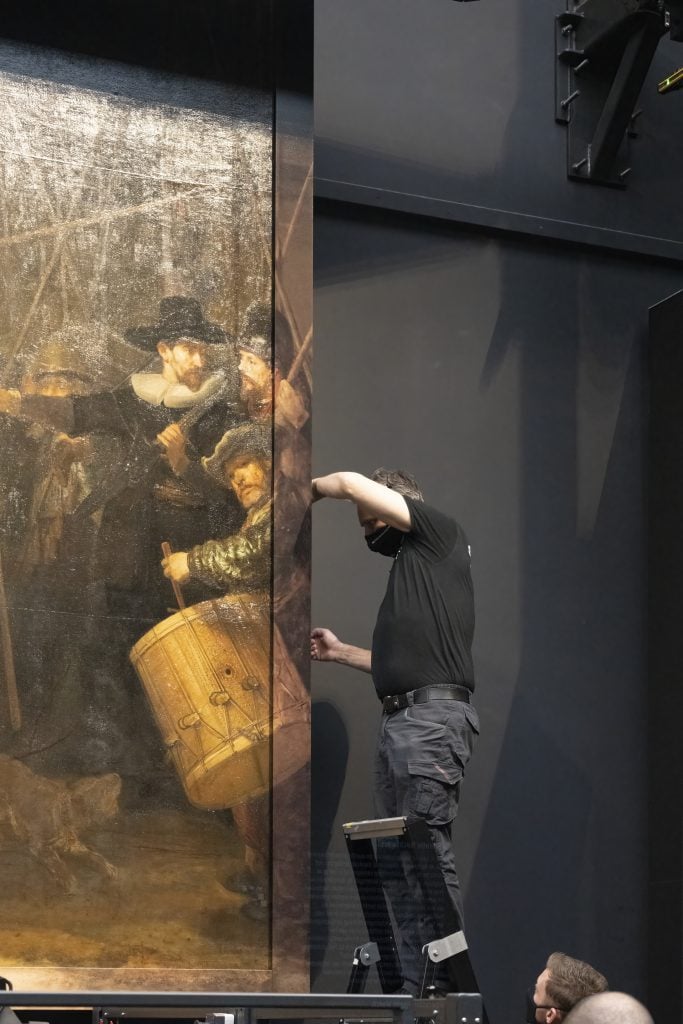
The process of reconstruction. Photo: Rijksmuseum/Reinier Gerritsen.
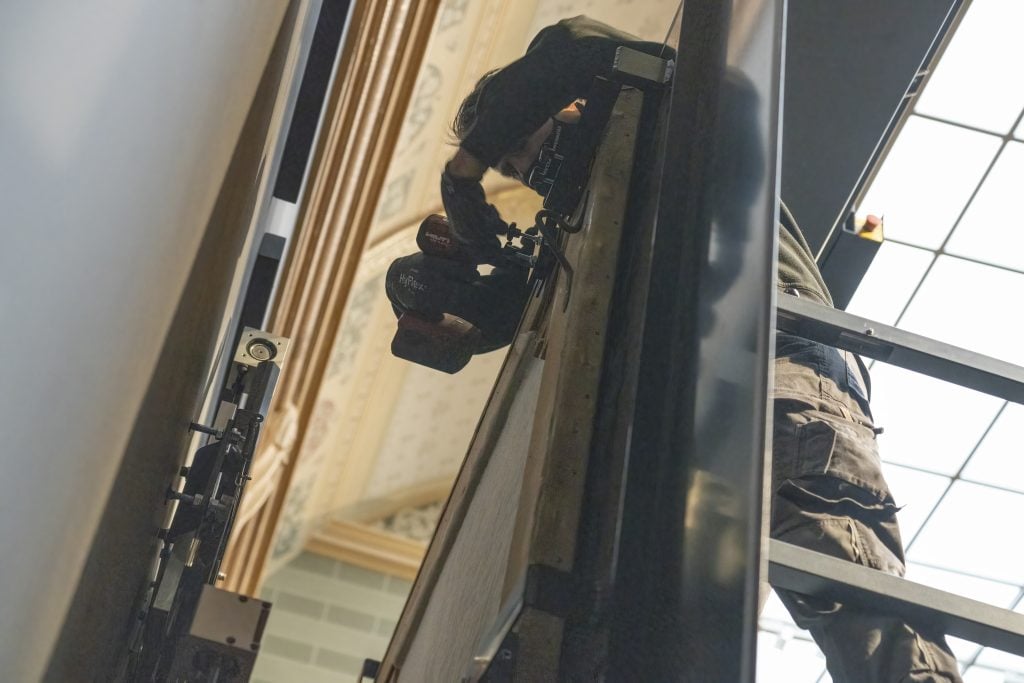
The process of reconstruction. Photo: Rijksmuseum/Reinier Gerritsen.
